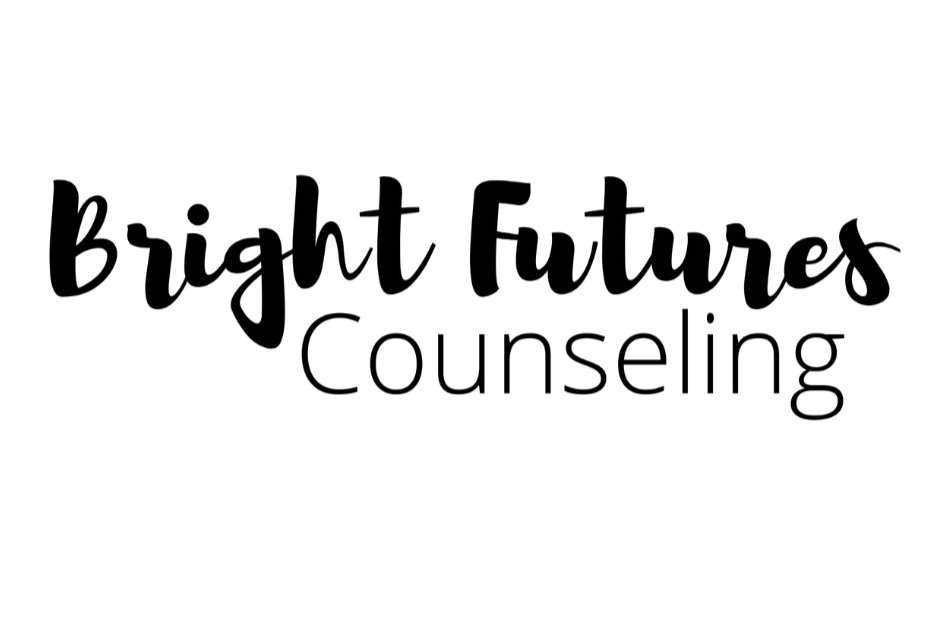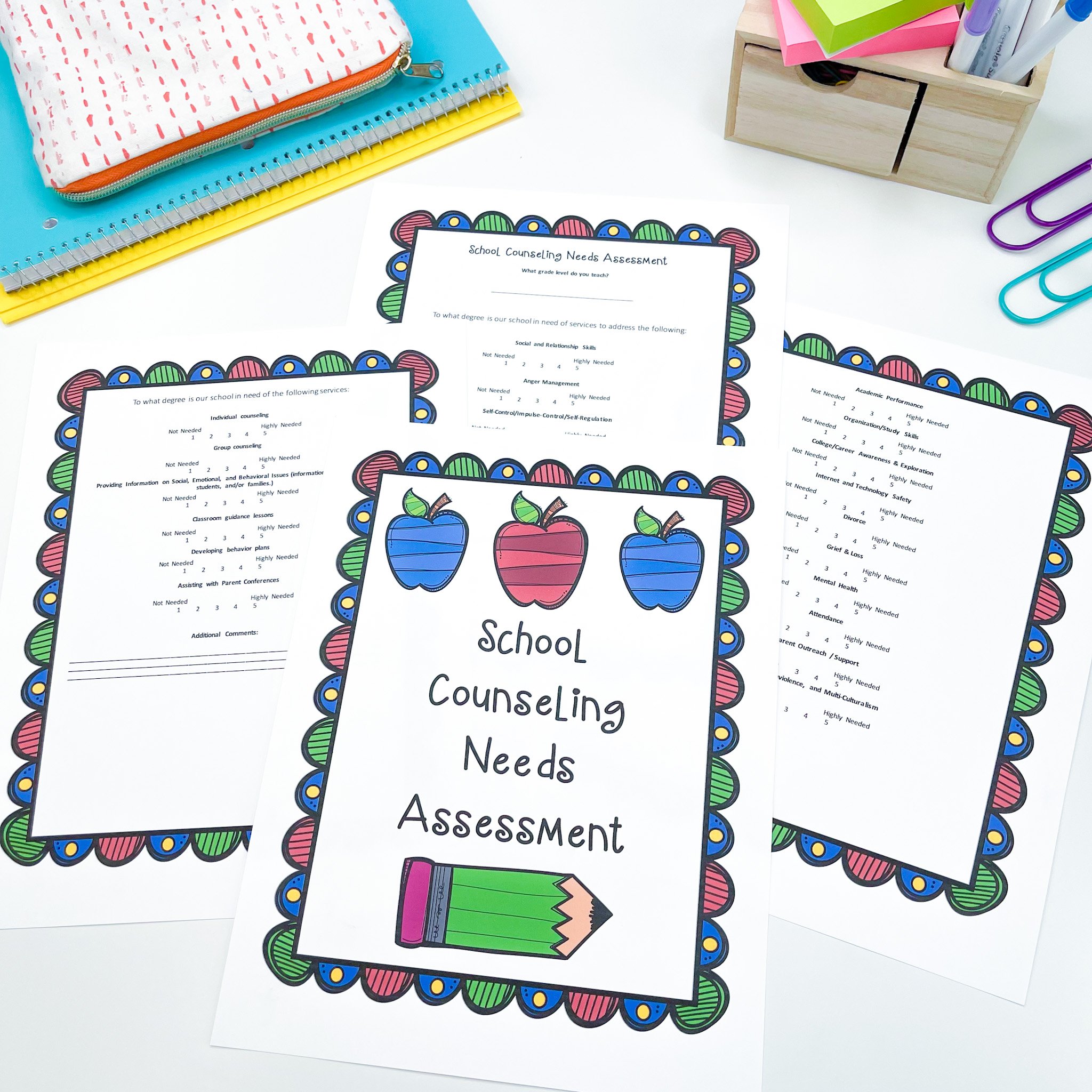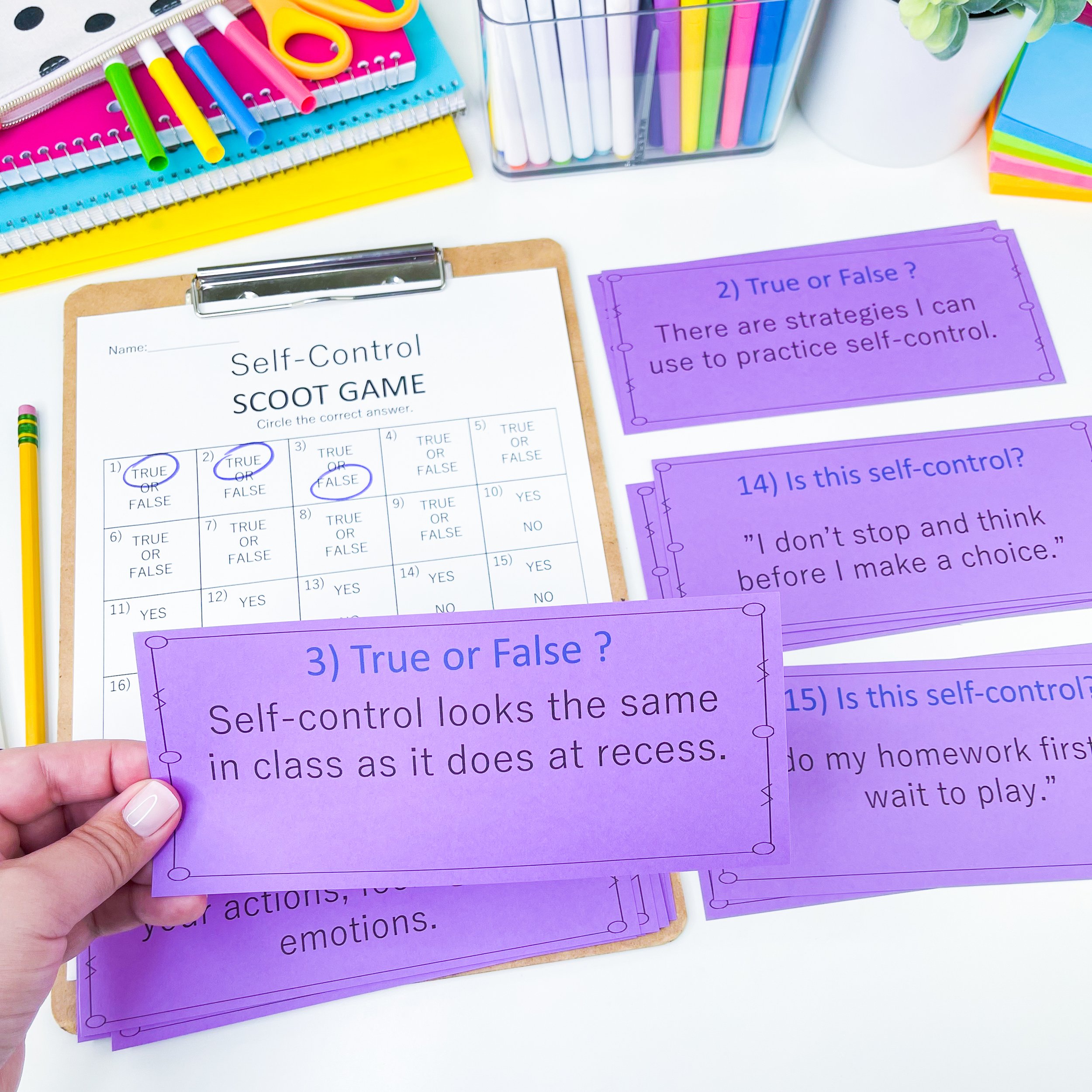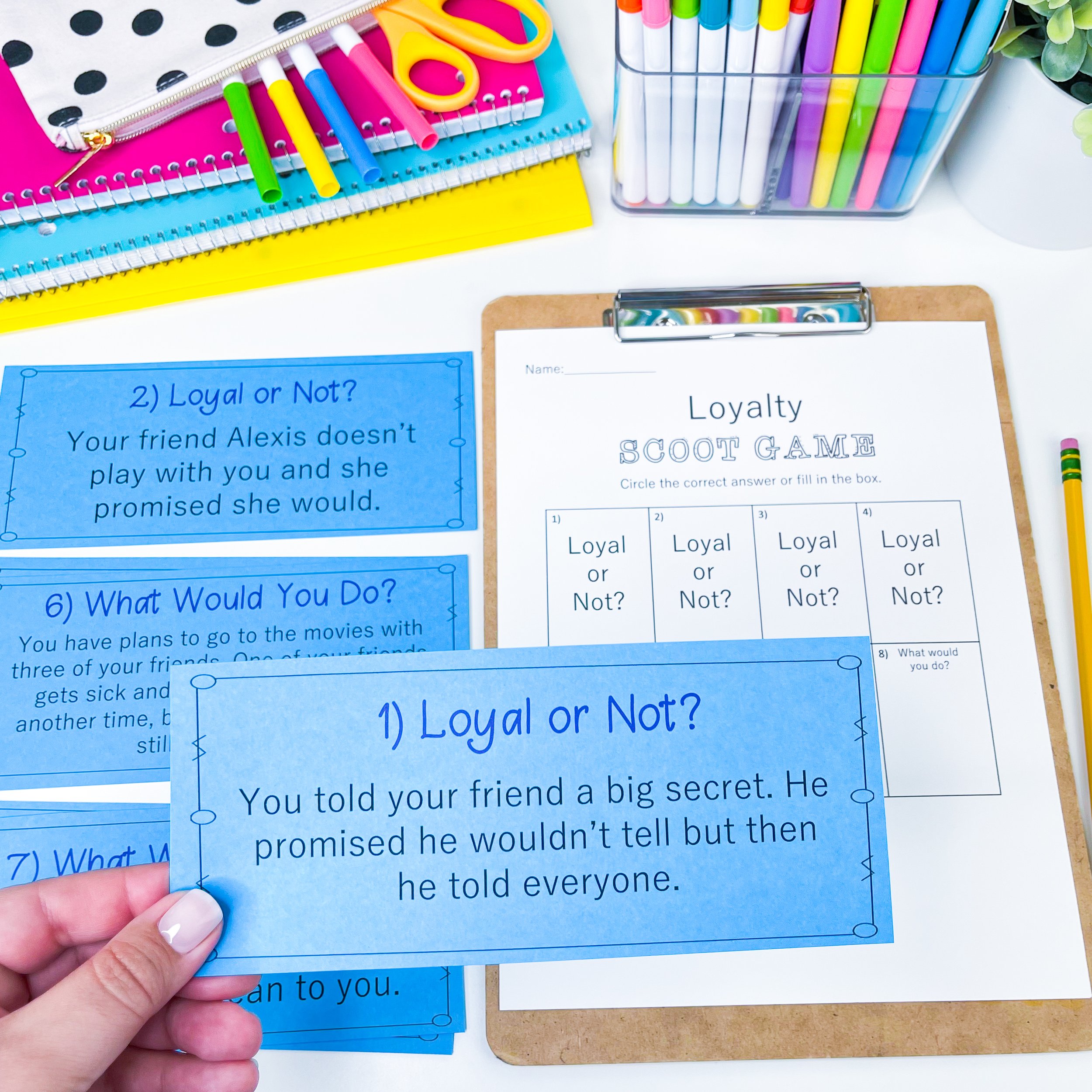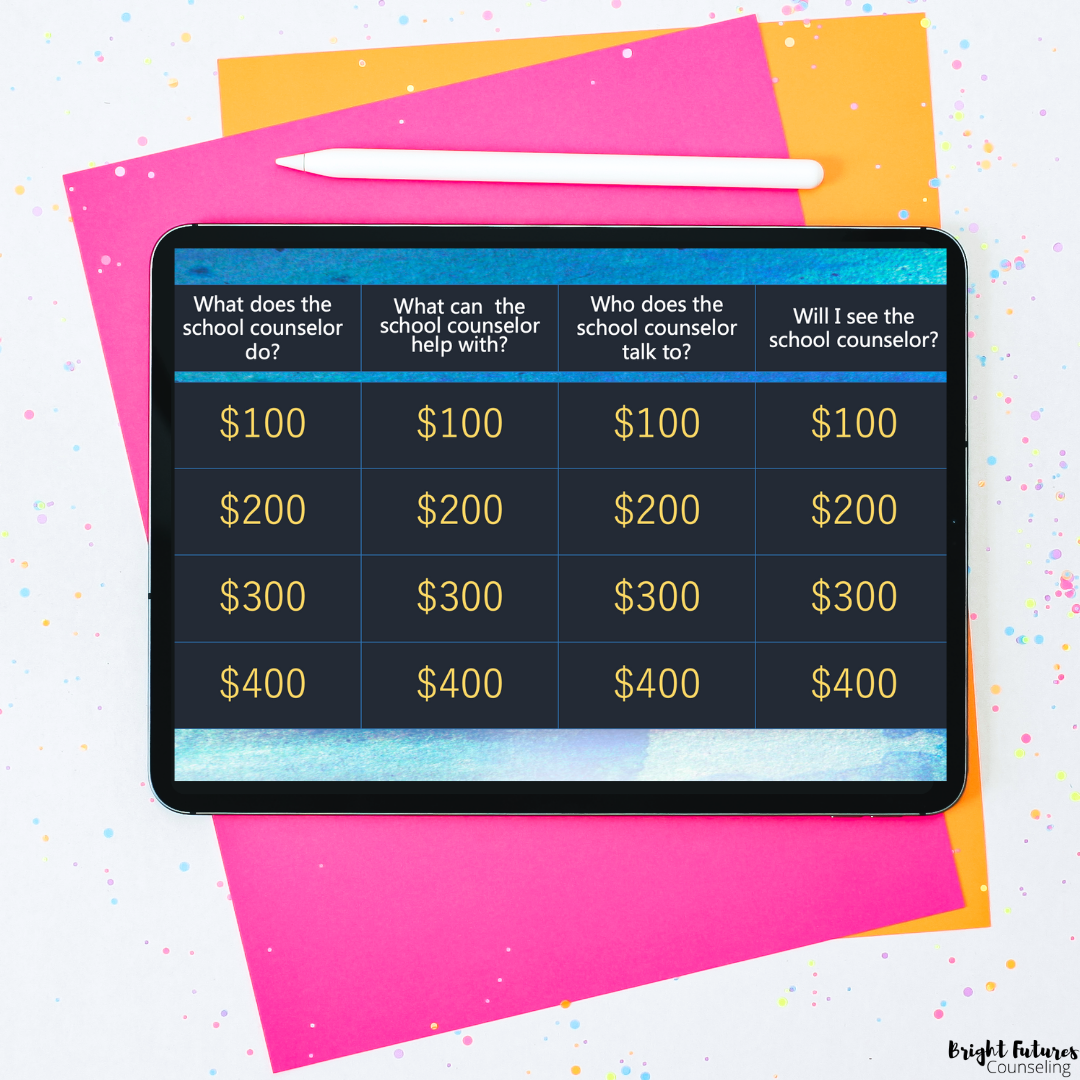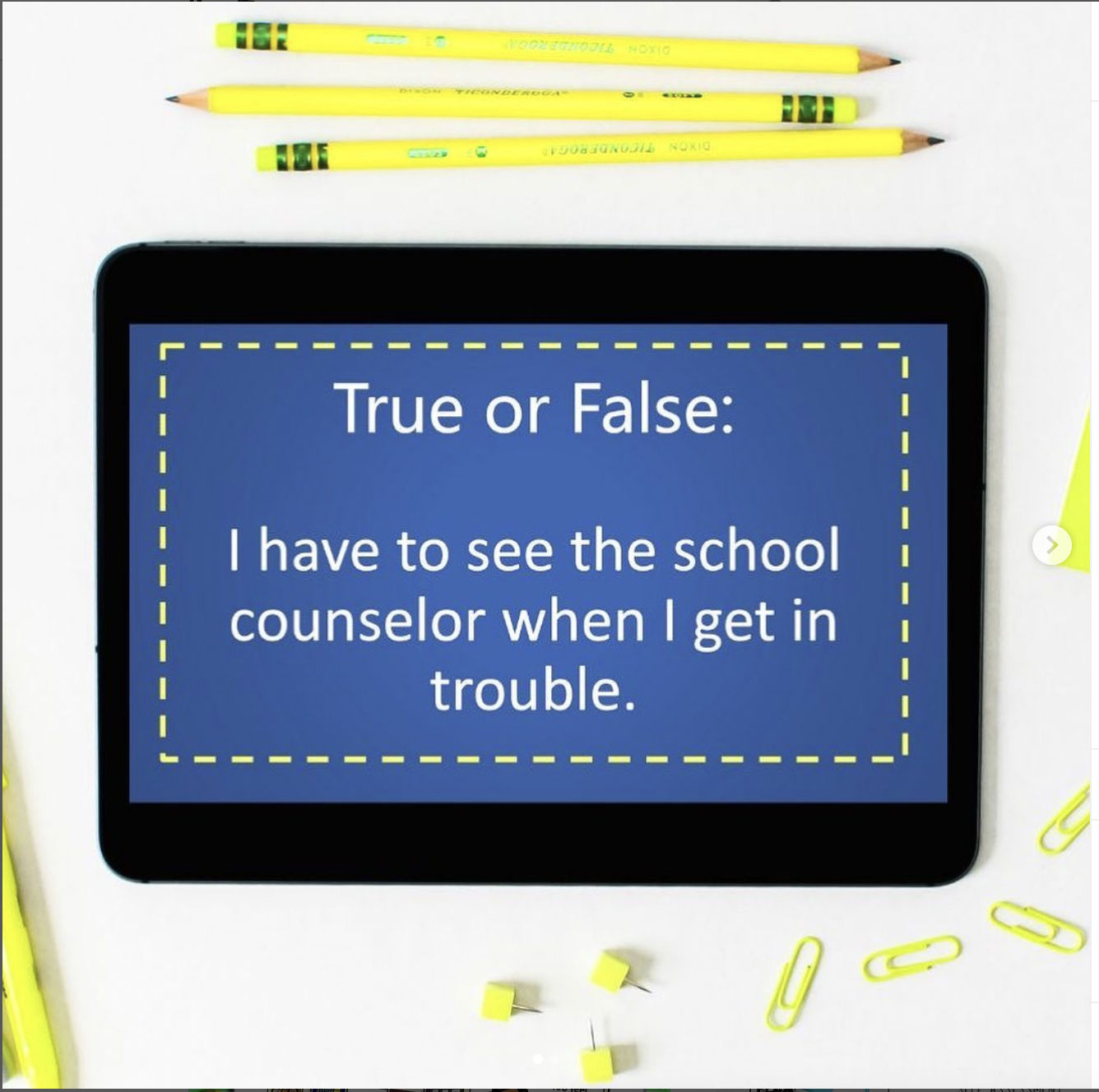4 Things I Wish I Knew When I Started Teaching Classroom Counseling Lessons
Teaching class lessons didn’t always come naturally to me. In fact, I used to dread class lessons because I lacked confidence and felt unprepared. How to schedule, plan, and teach class lessons was only briefly covered in my grad school classes. And classroom management was not covered at all!
When I landed my first counseling job class lessons were my biggest struggle by far. But, eventually, I got to the point where I loved them. Here are 4 things I wish I knew when I first started teaching class lessons.
1. Schedule for success (and low stress!)
Schedule your class lessons in advance by having teachers sign-up for a time with you using a scheduling tool like Calendly or a Google Sheets sign up form. This eliminates the back and forth email yo-yo of trying to schedule 20+ lessons each month and it prevents teachers from stopping you in the hall and asking when you’re coming into their class. (I would never know of the top of my head!)
Sign Up Options
There are three different ways to do teacher sign ups. I personally prefer option two, but choose the one that works best for you.
1. Teachers can sign up for their ideal time/day.
(Ex: first Tuesday of the month at 10 am) Then you schedule reoccurring lessons each month.
2. Teachers sign up for a year's worth of lessons at once.
Pro: You can schedule your year in advance.
Con: Teachers may get overwhelmed, and you may experience schedule changes.
Each month, teachers sign up for that month's lesson.
Pro: There are less schedule changes because it’s only max 4 weeks out.
Con: It can be trickier and more time consuming on your end because you have to work around previously scheduled groups, individual sessions, etc.
2. Select class lessons topics based on research (not randomness!)
You don’t have to randomly decide what you’ll be teaching. Check out these seven ways to source class lesson topics.
Books: Refer to curriculum provided to you or use a SEL picture book to base your counseling lessons around.
Needs Assessment: Send out a needs assessment to teachers to find out which topics they think their class would benefit most from. Check out my needs assessment template here.
Survey: Send out an informal 3-5 question survey to see which lessons teachers liked and disliked from last year.
Seasonal Trends: Take a look at the calendar and plan your lessons around seasons and holidays. (Ex: Bullying Prevention Month is in October, Teach healthy friendships and relationships around Valentine's Day.)
Referral Data + Deficits: Chat with your admin to see where referrals are coming from and where school-wide problems are (ex: attendance). Then teach lessons to improve these areas of need.
As Needed: Based on your needs assessment responses, offer as needed supplemental lessons to classes based on specific topics you aren't generally covering.
Meet the Counselor: An introductory "meet the counselor" lesson during your first month back is a great way to meet students, clarify your role, and model what future lessons will look like. Check out my favorite meet the counselor lessons here.
3. I can teach and manage behaviors without a teaching background
You may be thinking, "I have no background or experience teaching, how am I supposed to teach a lesson and manage a classroom full of 20+ kids?!" I know the feeling! I have a bachelor’s in psychology and a masters in school counseling but zero experience as a classroom teacher. We’re thrown to the wolves! Try this simple strategy to help you feel more prepared to teach class lessons.
Use a class callback to redirect students
You’ve heard them before, “class class, yes yes”, “if you can hear me clap once…”, etc. A class callback is a must-have tool to get a class to refocus after a breakout group, discussion, or activity.
There are two strategies for counselors to implement class callbacks:
Create a custom counseling callback to use with every class. They know when they counselor comes in, this is the callback we’ll use. This is the easiest for you because you only have to remember one, but it may take students time to learn it.
Ask each teacher which callback they use and use the same one when you visit their class. This is way more work on your end to remember when to use which callback, but it is easier on the students (and therefore more effective!) because they are already used to doing it.
4. It’s worth it to create engaging lessons
It can be challenging to keep students engaged during an individual session or small group, but a class lesson? That’s a whole different ball game!
An engaging class lesson accomplishes two things:
Helps students retain the information by using fun activities
Preventatively manages behaviors (distracted kiddos are usually off task!)
Even if you realize the importance of creating an engaging class lesson, it doesn’t necessarily mean you have the know-how! Try using the following lesson styles to spice up your counseling lessons and keep kiddos engaged.
Escape Rooms
Create an escape room style lesson to encourage friendly competition and hyper engagement! Students must solve the puzzles to proceed to the next one. Check out my “mission style” escape rooms here.
Scoot Games
Get students up and moving with a scoot game! Students travel around the room answering questions and moving on when you say "scoot!" Use music to cue students when to move on to the next question. Check out my scoot games here.
Game Shows
A game show is a fun way to introduce a concept! Divide the class into teams and see who can answer the most questions correctly. This Jeopardy-style game is always a favorite with the kiddos. I love to use it for a meet the counselor or tattling vs. reporting lesson.
I hope these four things are helpful to you so you don’t have to waste months of trial and error like I did!
